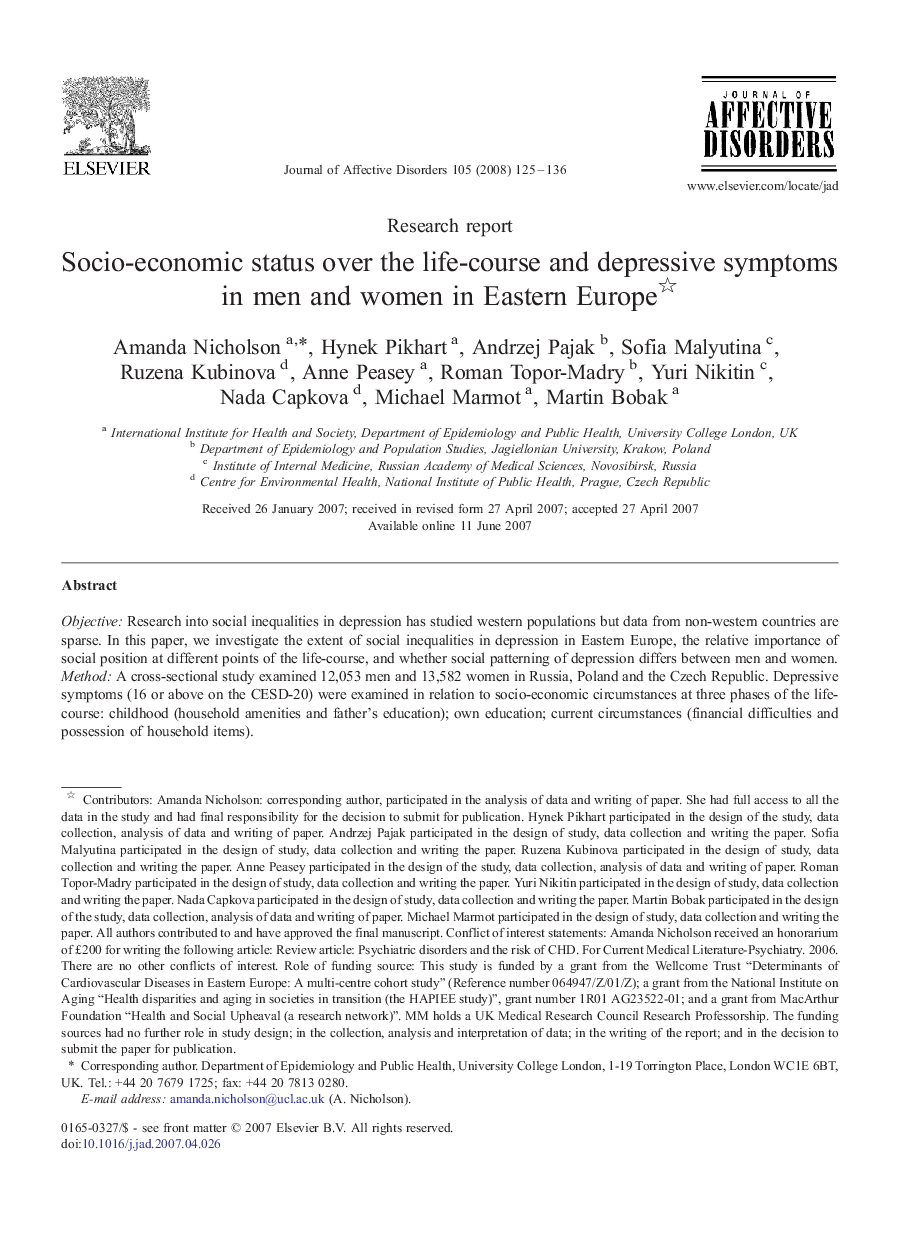| Article ID | Journal | Published Year | Pages | File Type |
|---|---|---|---|---|
| 4187722 | Journal of Affective Disorders | 2008 | 12 Pages |
ObjectiveResearch into social inequalities in depression has studied western populations but data from non-western countries are sparse. In this paper, we investigate the extent of social inequalities in depression in Eastern Europe, the relative importance of social position at different points of the life-course, and whether social patterning of depression differs between men and women.MethodA cross-sectional study examined 12,053 men and 13,582 women in Russia, Poland and the Czech Republic. Depressive symptoms (16 or above on the CESD-20) were examined in relation to socio-economic circumstances at three phases of the life-course: childhood (household amenities and father's education); own education; current circumstances (financial difficulties and possession of household items).ResultsPronounced social differences in depression exist in men and women throughout Eastern Europe. Depression was largely influenced by current circumstances rather than by early life or education, with effects stronger in Poland and Russia. Odds ratios in men for current disadvantage were 3.16 [95% CI: 2.57–3.89], 3.16 [2.74–3.64] and 2.17 [1.80–2.63] in Russia, Poland and the Czech Republic respectively. Social variables did not explain the female excess in depression, which varied from 2.91 [2.58–3.27] in Russia to 1.90 [1.74–2.08] in Poland. Men were more affected by adult disadvantage than women, leading to narrower sex differentials in the presence of disadvantage.LimitationsCross-sectional data with recall of childhood conditions were used.ConclusionCurrent social circumstances are the strongest influence on increased depressive symptoms in countries which have recently experienced social changes.
